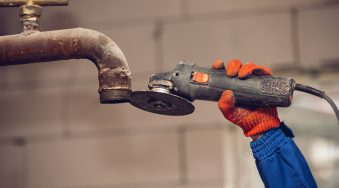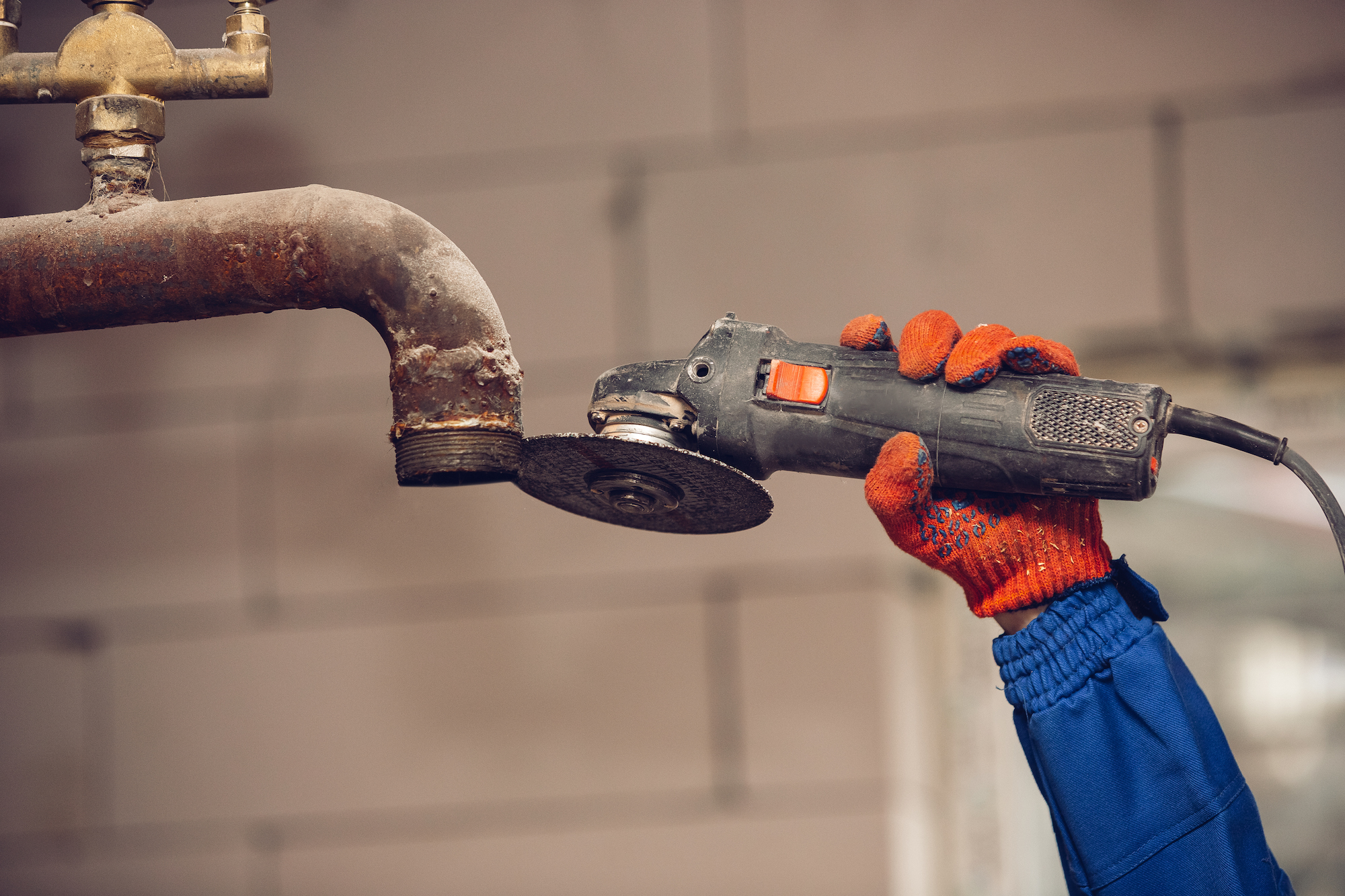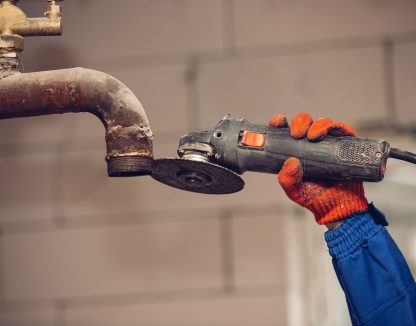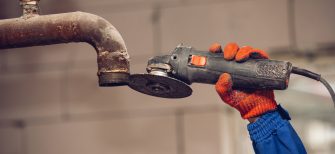Setting profitable plumbing service prices is essential for the success of any plumbing business. Developing pricing models that balance profit and staying competitive is key to help your plumbing business to grow. To help, we’ve put together this plumbing pricing guide. In it, we’ll cover pricing strategies, how to calculate key expenses, and set competitive plumbing service prices.
Seamlessly Implement a Custom Plumbing Flat Rate Price Book For Your Business Today
Time and Materials vs. Flat Rate Pricing
There are two primary pricing models utilized across the industry—time and materials and flat rate pricing.
Plumbing Time & Materials Pricing Model
The time and materials is one of the most common pricing models used by plumbing businesses. It calculates plumbing service prices based on the amount of time and materials used in each job. In this model, materials have a set cost assigned to them. Technicians track their time at a set hourly rate. Together, those two factors determine the price of a job. Here’s how it works:
Time and Materials Equation
((Total Job Hours x Hourly Rate) + Materials) x Markup = Time & Materials Price
Example: ((5 hours x $75) + $400) x 1.2 = $930
Pros
- Highly adaptive to project scope changes or unforeseen complexities
Cons
- Disputes with customers over the perceived value of time spent versus output
- Questions from customers about technician efficiency or the accuracy of billing hours
- Unexpected charges placed on customers due to project extensions
Plumbing Flat Rate Pricing Model
Flat rate pricing sets plumbing service prices using fixed prices for each service. Unlike the time and materials pricing model, flat rate doesn’t rely on hours spent or materials used. The flat rate price is predetermined and usually listed in a pricing book.
As a result, this creates cost transparency for customers. That means that the customer knows exactly how much they will be charged upfront, regardless of how long the job takes or what materials are used.
Here’s how it works:
Time and Materials Equation
((Total Job Hours x Hourly Rate) + Materials) x Markup = Time & Materials Price
Example: ((5 hours x $75) + $400) x 1.2 = $930
Pros
- Simplifies pricing for technicians on the job
- Clarity of costs for customers upfront
- Builds profitability into your pricing
Cons
- Complex jobs may take up more time or resources than typically allocated for a normal job
4 Strategies to Help Structure Flat Rate Pricing to Cover Unexpected Costs
1. Include a Buffer for Unforeseen Issues
Flat rate pricing doesn’t account for the jobs that will take up more time and resources than usual. Planning for these unexpected jobs is important to maintain profitability. 10 percent of the total estimate can provide a financial safety net for the unexpected.
2. Conduct a Thorough Assessment Before Providing a Quote
Get as much information about the scope of the job as possible so you can build an accurate proposal. Some things to consider are:
- How many hours is the job estimated to take?
- Will the job require more than one technician?
- Are permits required for this type of job?
- What are the required materials and equipment? What is the cost?
- What are the precise measurements for the required materials and equipment?
- Will the job site require extended labor hours or additional safety equipment?
Answering these questions gives you a better understanding of the time and materials you’ll need. For more complex jobs and larger scopes, you can add surcharges into your price book.
3. Create a Clear Pricing Structure for Additional Work
Like unexpected jobs, add-ons to jobs in progress are part of plumbing. Planning for changes and add-ons makes sure your pricing is flexible and easy to update. For example, will you charge a flat rate per hour for add-ons or will you require a fully updated estimate?
Transparency about how additional work is communicated and charged is also important. That way, customers are well-informed as the job and plumbing service prices change.
4. Keep a Reserve Fund for Unexpected Expenses
Every strategic business knows it’s critical to plan for the unexpected. Create an emergency fund of at least 6 months of business expenses. This prepares you for fluctuations in revenue and surprise business expenses.
Comprehensive Cost Calculations for Plumbing Jobs
It’s crucial to have a comprehensive understanding of your costs when setting plumbing service prices. A profitable pricing structure should include labor, materials, profit margins, and overhead.
How To Calculate Plumbing Labor Costs
Before quoting a job, you must assess its complexity. This determines the number of technicians needed and the estimated time to completion. With that, you can calculate the cost of labor for the project.
Labor costs should include the plumber’s hourly rate, taxes, and insurance. Each of these costs will vary based on your market. Plumber costs can differ between regions depending on average pay, demand for services, and cost of living. You should also factor that into your plumbing service pricing.
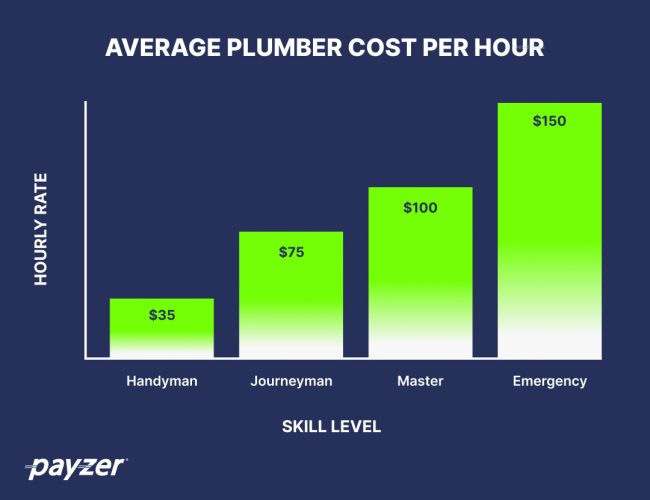
To maintain profitability, it’s standard in the industry to mark up labor costs. A 20-30% markup accounts for the unseen costs of running a business. That includes things such as recruitment, training, and human resources management.
Plumbing Labor Cost Equation
(Number of Technicians x Total Job Hours) x (Hourly Rate x Labor Markup) = Total Labor Costs
Example: (1 x 5) x ($75 x 1.2) = $450
How To Calculate Plumbing Overhead Costs
Overhead encompasses all the indirect costs of running your business. This includes office rent and utilities to vehicle maintenance, insurance, and marketing. Start by looking at your plumbing expenses from previous years. This shows your average plumbing expenses and helps build these costs into your jobs.
Hourly Overhead Cost Equation
Total Monthly Overhead Costs / Number of Billable Hours Per Month = Hourly Overhead Cost
Example: $10,000 / 700 = $14.29
Overhead Cost Per Job Equation
Hourly Overhead Cost × Total Job Hours = Total Overhead Cost Per Job
Example: $14.29 x 5 = $71.45

Total Job Price Equation
Labor + Materials + Overhead = Total Job Price
Example: $450 + $420 + $71.45 = $941.45
How To Ensure That Your Plumbing Service Prices are Competitive
So you’ve identified the costs associated with running your business. Now you need to conduct a competitive analysis to compare pricing. Start with a report that identifies other plumbing service providers in your area. They should offer similar services and operate in the same areas as your business.
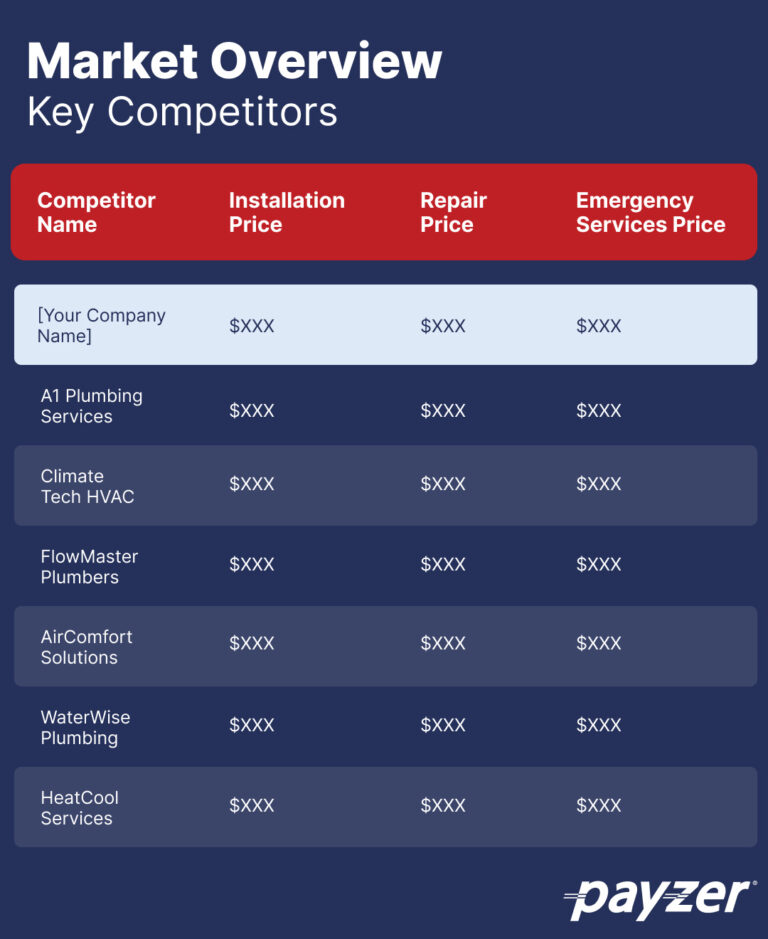
Look at your competitors’ websites, reviews, and word of mouth to gauge their pricing. Then compare them to your own. If you find you’re charging substantially more or less for a service, you can adjust your markups.
Additionally, consider the average income and home size of your clients. This information can help you determine how to set your plumbing services prices. Consider the following pricing strategies:
- Economy Pricing: provides affordable rates due to jobs completed at a lower cost. This strategy is best where customers care most about affordable service.
- Premium Pricing: charges a higher rate than competitors with additional premium services. This pricing works for customers willing to pay extra for convenience and high-quality service.
- Competitive Pricing: charges similar rates to competitors and offers incentives to attract customers. This is the most common pricing strategy and can be successful across most markets.
Keep in mind that you do not have to offer the average service price. You can justify above-average prices for higher quality service, equipment, or premium services.
Premium Services for Setting Above-Average Prices
A premium plumbing service prices strategy will add value to your customers. It enables you to charge higher prices and generate more profit. Customers want affordable plumbing businesses that will be responsive in an emergency.
Here are three ways to provide premium service to your customers.
Emergency Response Services
Responding quickly to emergencies is one of the most lucrative aspects of plumbing. Here’s how you can improve your response to emergency calls:
- Use an on-call schedule with your technicians
- Provide an emergency phone number for customers
- Charge a higher flat rate or create premium service markups for 24/7 emergency service calls
Membership Programs
Membership programs are great tools for customer retention. They allow you to offer customers exclusive benefits for a membership fee, including:
- Priority scheduling
- Reduced costs for routine maintenance
- Exclusive discounts and service savings
Customer Financing
Offering a variety of ways for customers to pay opens the door to more jobs. Here’s why financing options are a great opportunity to drive more business:
- Create a stress-free experience with payment options
- Remove barriers to closing sales or add-ons
- Reduce the time spent chasing down unpaid invoices
When Is It Time To Update Your Plumbing Service Pricing?
Balancing predictability and profitable plumbing service prices for your business is essential. Customers appreciate consistency, but your business must also remain agile in evolving markets.
Striking this balance is key to customer retention and long-term profitability. Changing plumbing service prices too often can shake customer confidence. Stagnant pricing could leave your business vulnerable to rising costs.
A sign that you should update pricing is a change in your business expenses. As the market shifts, labor and material costs will also change. Review your prices at least once per year to accommodate for inflation and market changes.
How to Measure an Effective Plumbing Pricing Strategy
A strong plumbing service prices strategy should generate an average gross profit margin between 40% to 60%. To calculate your profit margin, you must first calculate your net income. Then, you will divide your net income by your total revenue to determine your profit margin.
Net Income Equation
Total Revenue – Material Costs – Labor Costs – Overhead Costs = Net Income
Example: $500,000 – $105,000 – $150,000 – $20,000 = $225,000
Profit Margin Equation
(Net Income / Total Revenue) x 100 = Profit Margin
Example: ($225,000 / $500,000) x 100 = 45%
You can calculate the profitability of each job utilizing the same equations. If your average job profit is at or above your target profit margin, your plumbing service prices are working. Finally, customer lifetime value (LTV) is another indicator of effective plumbing service prices. LTV is the total revenue gained from each customer throughout your partnership. The average plumbing LTV is $8,023. A below-average LTV indicates an above-average turn rate or below-average revenue per job. LTV can improved through enhanced customer experience, higher pricing, or job upsells.
How To Automate Plumbing Profitability
Plumbing technology can help automate profitability in several ways, including:
- Automatic reporting: reduces manual errors and enables informed decisions on your pricing strategy
- Accounting software integration: connecting QuickBooks eliminates double-entry bookkeeping and provides simplified financial tracking
- Flat rate price books: streamline profitable pricing and ensure your costs are covered
- Maintenance agreements: create recurring revenue while tracking renewals, overdue payments, and upcoming appointments
When evaluating which plumbing field service management software to work, use these questions to find the right match for your business:
- What onboarding and support is offered?
- Does the software integrate with QuickBooks (or other accounting software)?
- Does the software have custom maintenance agreements and proposals?
- Will I be able to collect payments from customers?
- Is there in-platform financing available?
- Is there an app available for ease of use in the field?
Payzer offers a solution that well-supported platform that includes:
- Automatic, in-depth reporting
- QuickBooks integration
- Flat rate price books
- Maintenance agreements
- In-platform financing
- Easy-to-use mobile app
- 24/7 support and comprehensive onboarding
- and much more!
See How Payzerware Can Help You Increase Your Revenue an Average of 26% in Year One
Plumbing FAQ
How do I estimate plumbing costs?
Plumbing costs should encompass the expenses associated with running your business. That includes, but is not limited to:
- Labor (e.g., hourly pay rates, federal and state taxes, FICA taxes, etc.)
- Materials (e.g., standard tools for every tech, parts and machinery for jobs, etc.)
- Overhead (e.g., insurance, utilities, rent, vehicles, etc.)
You can break this down annually and by job. That will give you a better understanding of your plumbing costs each year and for the average job.
What is the average plumber hourly rate?
In 2025, the average plumber hourly rate is between $45-$150. The average cost for plumbing services ranges between $125-$145 depending on the scope and size of the job.
What is an example of a flat rate pricing for plumbing?
Let’s say a customer calls you to fix a leaky faucet. You determine the job requires replacing a faulty valve and installing a new faucet. Under a flat rate pricing model, you would quote the customer a fixed price for the job, regardless of time and materials used.
For example, you might charge a flat rate price of $250 for a faucet repair. This price includes the cost of the new valve, faucet, any necessary fittings, and labor. The flat rate price is determined based on the average time and materials required to complete the job. It also includes the profit margin you are targeting.
